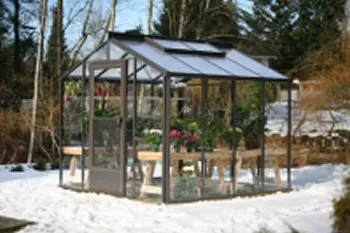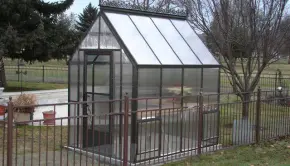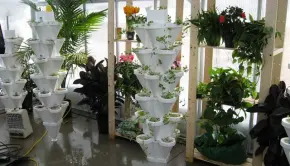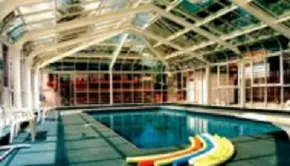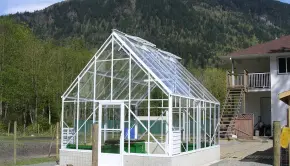What’s Better? Glass or Polycarbonate Glazing?
Glass or Polycarbonate Glazing for your Greenhouse
There are a variety of materials that are available when constructing a greenhouse with the emphasis being; should glass or polycarbonate glazing be used? When considering your choices, remember that longevity (being able to tolerate years of severe weather) and heat efficiency are the two main characteristics you should consider.
Glass is the most universal material being used today. It varies in price according to the quality of its energy saving characteristics. It can be purchased in single, double or triple thickness for the greatest level of efficiency and is also available as a laminated glass for maximum strength.
Because of its durability, glass can last a lifetime. New improved glass products include low-e, heat mirror and argon-filled air spaces. Be sure to look for a greenhouse kit that provides all the cut pieces for you. You cannot cut tempered glass as it will shatter. Glass also has minimal amounts of contraction or expansion during severe changes in weather and temperatures. Also, glass is not flammable and it generally doesn’t scratch.
Polycarbonate on the other hand is the strongest glasslike glazing available on the market today. Even though it is a type of plastic, it is 200 times stronger than glass but weighs less than half. It offers high clarity and light transmission and is almost unbreakable. However, the life span of polycarbonate is usually up to 15 years and has the propensity to yellow around the ten year mark. Polycarbonate also provides better heat efficiency than glass does.
Compared with glass, polycarbonate is easier to install. There is not a huge difference in price between these two options, however, polycarbonate greenhouses usually cost less to ship as freight shipments are based on weight and polycarbonate weights less than glass.
You can also consider a `combination`style greenhouse. Opt to have your roof in polycarbonate and the side walls made of glass. Most heat loss occurs through the roof as heat rises. This is a good option if you want to create additional heat efficiency and still have aesthetically pleasing glass walls.
The pros and cons of both materials are legitimate points to consider but in the final analysis, it comes down to the question of weather conditions in your geographical region and heat efficiency.
Greenhouse Tip: If you are using a glass greenhouse during colder months, wrap the interior with plastic or bubble wrap…this provides you with the extra layer of heat efficiency you will require to lower your heating costs.


